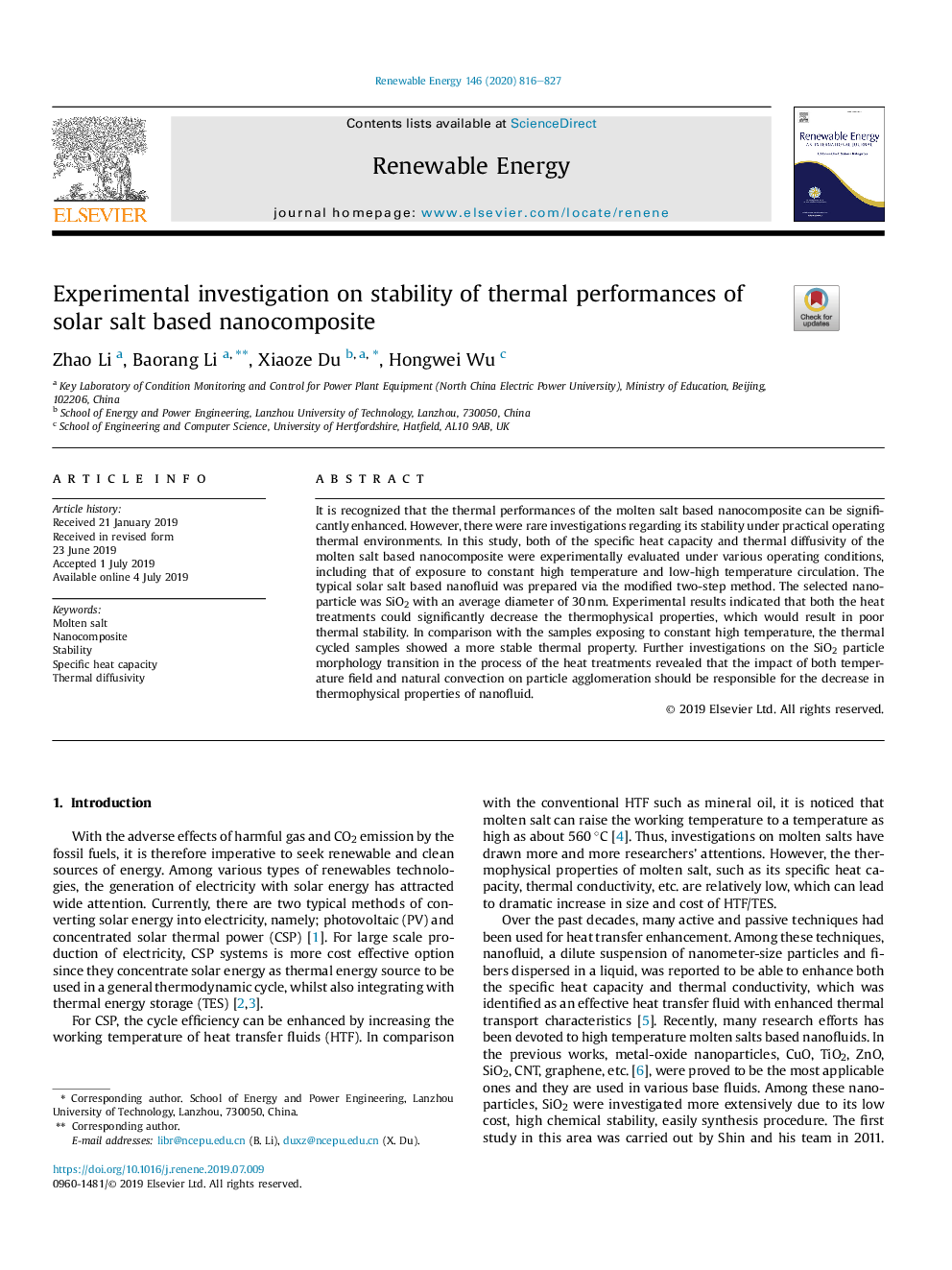| Article ID | Journal | Published Year | Pages | File Type |
|---|---|---|---|---|
| 13422047 | Renewable Energy | 2020 | 12 Pages |
Abstract
It is recognized that the thermal performances of the molten salt based nanocomposite can be significantly enhanced. However, there were rare investigations regarding its stability under practical operating thermal environments. In this study, both of the specific heat capacity and thermal diffusivity of the molten salt based nanocomposite were experimentally evaluated under various operating conditions, including that of exposure to constant high temperature and low-high temperature circulation. The typical solar salt based nanofluid was prepared via the modified two-step method. The selected nanoparticle was SiO2 with an average diameter of 30â¯nm. Experimental results indicated that both the heat treatments could significantly decrease the thermophysical properties, which would result in poor thermal stability. In comparison with the samples exposing to constant high temperature, the thermal cycled samples showed a more stable thermal property. Further investigations on the SiO2 particle morphology transition in the process of the heat treatments revealed that the impact of both temperature field and natural convection on particle agglomeration should be responsible for the decrease in thermophysical properties of nanofluid.
Related Topics
Physical Sciences and Engineering
Energy
Renewable Energy, Sustainability and the Environment
Authors
Zhao Li, Baorang Li, Xiaoze Du, Hongwei Wu,
